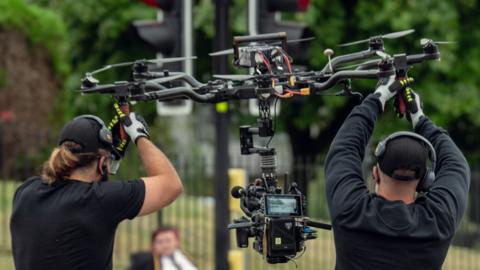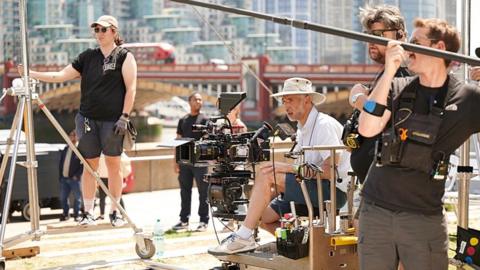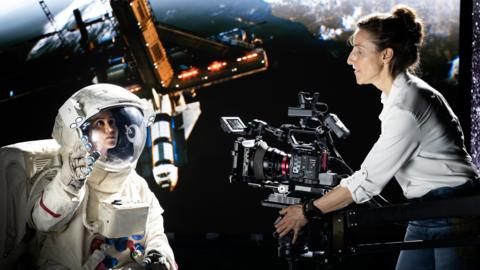Three strong knocks from the police battering ram and the front door bursts open. There's a lot of shouting.
We follow heavily-armed officers as they stream into the house, a woman drops to the floor as the camera turns left, and we head up a small, dimly lit staircase, passing a man with his back against the wall, hands raised, yelling to no avail.
Within moments, a 13-year-old boy has been arrested and we're back outside in the morning light. The family screams on the front lawn as the camera returns to the boy, now a detainee in the dark interior of a police van.
All this happens in three minutes. In one take. It is an early scene in Netflix's hit show Adolescence, which was watched by more than 120 million people worldwide in its first month.
It wouldn't have been possible to film a sequence quite like this five years ago, the show's cinematographer Matthew Lewis claimed in a recent interview. Each of the four, roughly one hour-long episodes of Adolescence was shot entirely in one take, known as a "oner", with the camera frequently following characters through frantic scenes, or switching from handheld to vehicle-mounted filming.



